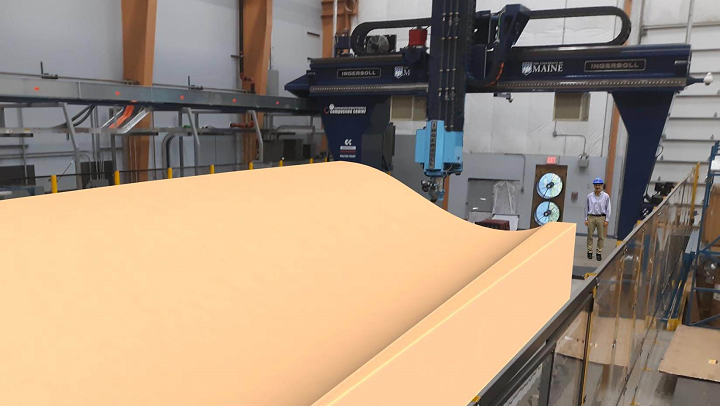After receiving significant press for its 3D printed home made from biomaterials, the University of Maine has been awarded $7.6 million from the U.S. Department of Energy’s (DoE’s) Oak Ridge National Laboratory (ORNL) for Phase 3 of the Hub and Spoke Program. This will allow the school to continue researching the development structurally reinforced materials biomaterials, as well as broaden the material systems used, while performing workforce development through a new Hub and Spoke Research Experience for Undergraduates (REU) Program.
In 2016, ORNL visited UMaine, resulting in the Hub and Spoke Program to combine the bio-based composites expertise of the school’s Advanced Structures and Composites Center with the manufacturing abilities of ORNL’s Manufacturing Demonstration Facility. By 2019, UMaine received $9 million to develop forest-based biomaterials for additive manufacturing (AM). This was pushed into phase two with $9 million in 2021, with the school working toward widespread adoption of nano- and micro-cellulose-reinforced thermoplastic composites for 3D printing. This saw the University of Maine Advanced Structures and Composites Center (ASCC) 3D print a 600-square-foot home made up of wood fiber-PLA composite.
As a part of phase three, UMaine will use the materials derived so far to commercialize new products “that achieve functional parity with conventionally produced components, but at reduced environmental impact.” The group will also develop new manufacturing processes to tailor the materials to “energy-relevant use cases with a major focus on low-carbon building technologies.” These include high-throughput 3D printing with multi-material extrusion, as well as hybrid, collaborative robotics. To drive the project further, UMaine is looking for additional support for projects related to offshore wind, marine, and construction.
It will be interesting to see how the partners package the technologies into product-specific bundles. Because UMaine already boasts a MasterPrint 3D printer, the largest polymer 3D printer in the world, we can imagine, perhaps, a MasterPrint used to pitch the 3D printing of wind turbine molds. We might also see robotic arms work together to 3D print buildings using the PLA material. The MasterPrint at UMaine has already been used to 3D print a boat hull—the world’s largest 3D printed boat and solid object—so it wouldn’t be a surprise if it is used once more to print a boat hull from that same biocomposite.
Additionally, the school will address workforce development through its REU program, which will put 12 undergraduate students through a 10-week summer research experience at ORNL or UMaine. Those interested can apply here.
3DPrint.com and SmarTech Analysis are hosting Additive Manufacturing Strategies in New York City on February 7-9, 2023. Register for the event here to learn from and network with the most exciting companies and individuals in AM.
